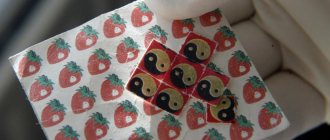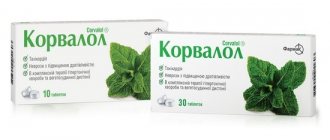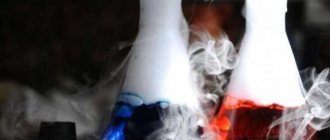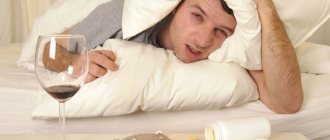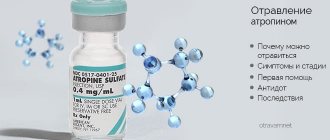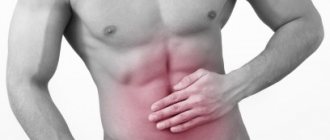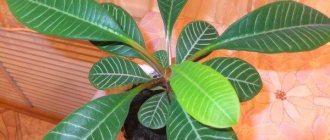General reactions:
- from the nervous system and sensory organs - dizziness and headaches, confusion, hallucinations, euphoria, paralysis of accommodation, disturbances of tactile sensations
- from the heart and blood vessels - ventricular and sinus tachycardia, myocardial ischemia, ventricular fibrillation
- from the gastrointestinal tract - intestinal atony, constipation, dry oral mucosa
- other adverse reactions - fever, urinary retention, photophobia
Local reactions:
- tingling sensation in the eyes, increased intraocular pressure
- irritation of the eyelids, hyperemia of the mucous membranes of the eye
- conjunctivitis
- paralysis of accommodation (pupil dilation)
With single administrations of a dose of atropine not exceeding 0.5 mg, paradoxical reactions from the parasympathetic nervous system, such as bradycardia and slowing of myocardial conduction, cannot be excluded. Atropine also reduces the pharmacological activity of m-cholinomimetics (for example, muscarine) and anticholinesterase drugs (physostigmine, proserine, etc.). The side effects of atropine are enhanced by the simultaneous use of tricyclic antidepressants, phenothiazines, antihistamines and other drugs with m-anticholinergic properties.
Physicochemical properties[ | ]
White crystalline or granular powder, odorless. Easily soluble in water and alcohol. The solutions have a neutral reaction; To stabilize injection solutions, add hydrochloric acid with a pH of 3.0–4.5 and sterilize at +100 °C for 30 minutes.
Atropine is optically inactive: a mixture of physiologically active levorotatory and physiologically inactive dextrorotatory isomers. The levorotatory isomer is called hyoscyamine and is approximately 2 times more active than atropine. A natural alkaloid found in plants is hyoscyamine; upon chemical isolation of the alkaloid, it is mainly converted into the racemic form - atropine.
Antidote
Treatment of poisoning begins with gastric lavage with water, potassium permanganate or saline laxative solutions. The poisoned person should be given the antidote atropine immediately. It could be:
The administration of the antidote should be repeated after 90 minutes.
The more severe the poisoning, the shorter the interval the antidote is administered. In severe cases, it can be administered every 15 minutes. Aminostigmine quickly restores consciousness, eliminates psychomotor agitation and hallucinations. It is used not only to treat overdose, but also to prevent relapses of coma.
There is another atropine antagonist - the alkaloid pilocarpine. Preparations based on it (eye drops) are used in ophthalmology to reduce intraocular pressure. Atropine, by dilating the pupil, can cause glaucoma. With a strong increase in pressure inside the eye, retinal detachment can occur. Therefore, in case of poisoning with plants or drugs containing atropine, pilocarpine should be administered immediately according to the following scheme:
- every 15 minutes, 1 drop in each eye for an hour;
- for the next 2–3 hours, drop 1 drop every 30 minutes;
- then 4–6 hours - a drop every hour;
- then 3–6 times a day, drop by drop until high intraocular pressure is relieved.
Let's summarize. Atropine is an alkaloid from plants in the nightshade family. This is an anticholinergic drug actively used in medicine. It is used in gastroenterology, pulmonology, cardiology, ophthalmology, anesthesiology, toxicology, and urology. Serious overdose of this drug can occur if you accidentally ingest nightshade berries or large amounts of the drug. The clinical picture of poisoning depends on the dose taken. Death occurs from taking 100 mg of atropine. There are specific antidotes that need to be taken immediately - these are aminostigmine and galantamine. They are administered intravenously repeatedly. The consequences of atropine poisoning can be coma, impaired intelligence and memory.
Atropine, which is actively used in the treatment of certain diseases, can cause poisoning, during which an atropine antidote will be required.
Atropine is an alkaloid, i.e. a nitrogen base that is found in small quantities in plants and has powerful biological activity.
This substance is obtained by chemical processing of plant elements: seeds, roots and leaves; Poisonous higher plants are the source for its production. For example, henbane or dope. Thus, the drug can have an extremely powerful toxic effect on the human or animal body.
Medical use[ | ]
Atropine sulfate (Atropini sulfas) is used in medical practice.
Effect on the body[ | ]
According to modern concepts, atropine is an exogenous antagonist of cholinergic receptors. The ability of atropine to bind to cholinergic receptors is explained by the presence in its structure of a fragment that is related to the molecule of the endogenous agonist - acetylcholine.
The main pharmacological feature of atropine is its ability to block m-cholinergic receptors; it also acts (albeit much weaker) on n-cholinergic receptors. Atropine thus belongs to the non-selective blockers of m-cholinergic receptors.
By blocking m-cholinergic receptors, it makes them insensitive to acetylcholine, in the area of the endings of postganglionic parasympathetic (cholinergic) nerves. The effects of atropine are opposite to those observed when the parasympathetic nerves are stimulated.
The introduction of atropine into the body is accompanied by a decrease in the secretion of the salivary, gastric, bronchial, sweat glands (the latter receive sympathetic cholinergic innervation), pancreas, increased heart rate (due to a decrease in the inhibitory effect of the vagus nerve on the heart), a decrease in the tone of smooth muscle organs (bronchial tubes, abdominal organs and etc.). The effect of atropine is more pronounced with increased tone of the vagus nerve.
Under the influence of atropine, the pupils are greatly dilated. The mydriatic effect depends on the relaxation of the fibers of the circular muscle of the iris, which is innervated by parasympathetic fibers. Simultaneously with the dilation of the pupil due to a violation of the outflow of fluid from the chambers, an increase in intraocular pressure is possible. Relaxation of the ciliary muscle of the ciliary body leads to paralysis of accommodation.
Atropine crosses the blood-brain barrier and has complex effects on the central nervous system. It has a central anticholinergic effect and causes a decrease in tremors and muscle tension in patients with parkinsonism. It is, however, not effective enough; at the same time, its strong effect on peripheral m-cholinergic receptors leads to a number of complications (dry mouth, palpitations, etc.) that complicate its long-term use for these purposes. In large doses, atropine stimulates the cerebral cortex and can cause motor and mental agitation, severe anxiety, convulsions, and hallucinatory phenomena. Based on its psychotropic effect, it, like other anticholinergics, is classified as a delirium - a substance that can cause true delirium with memory impairment. In therapeutic doses, atropine stimulates respiration; large doses may, however, cause respiratory paralysis.
Application[ | ]
Atropine is used for gastric and duodenal ulcers, pylorospasm, cholecystitis, cholelithiasis, for spasms of the intestines and urinary tract, bronchial asthma, to reduce the secretion of the salivary, gastric and bronchial glands, and for bradycardia that has developed as a result of increased tone of the vagus nerve.
For pain associated with smooth muscle spasms, atropine is often administered together with analgesics (analgin, promedol, morphine, etc.).
In anesthesiological practice, atropine is used before anesthesia and surgery and during surgery to prevent bronchiolo- and laryngospasm, limit the secretion of the salivary and bronchial glands and reduce other reflex reactions and side effects associated with excitation of the vagus nerve.
Atropine is also used for x-ray examination of the gastrointestinal tract if necessary to reduce the tone and motor activity of the stomach and intestines.
Due to its ability to reduce the secretion of sweat glands, atropine is sometimes used to treat excessive sweating.
Atropine is an effective antidote for poisoning with cholinomimetic and anticholinesterase substances, including FOS.
Ophthalmology[ | ]
In ophthalmic practice, atropine is used to dilate the pupil for diagnostic purposes (when examining the fundus of the eye, determining true refraction, etc.), as well as for therapeutic purposes in acute inflammatory diseases (iritis, iridocyclitis, keratitis, etc.) and eye injuries; relaxation of the eye muscles caused by atropine promotes its functional rest and accelerates the elimination of the pathological process.
For therapeutic purposes, it is advisable to use atropine as a long-acting mydriatic agent; For diagnostic purposes, it is more advisable to use shorter-acting mydriatics. Atropine causes maximum pupil dilation 30-40 minutes after instillation, the effect lasts up to 7-10 days. Paralysis of accommodation occurs within 1-3 hours and lasts up to 8-12 days.
At the same time, homatropine causes maximum mydriasis after 40-60 minutes; the mydriatic effect and paralysis of accommodation last 1-2 days. The mydriatic effect and paresis of accommodation when using platyphylline lasts 5-6 hours.
According to modern data (at the beginning of the 21st century), short-acting cycloplegic drugs can be used to study refraction and to select glasses for children (cyclopentolate is the first choice drug), which can successfully solve both of these problems with a single visit to the doctor for more than 85% of children; Atropine is advisable to use for expert and doubtful cases [2].
Psychiatry[ | ]
Due to the effect that atropine has on the cholinergic systems of the brain, it was proposed to use it in psychiatric practice for the treatment of psychoses (affective, paranoid, catatonic and other conditions). The so-called atropinocomatous therapy involves the use of large doses of atropine.
Atropine coma is accompanied by pronounced neurological and somatic disorders, which requires exceptionally great caution with this method of treatment. Due to the unresolved issue of the degree of effectiveness of atropinocomatous therapy and side effects, the method has practically not been used since the late 1970s [3].
In case of FOS poisoning[ | ]
In the absence of more modern means, for example, Afin or Aprofen (Taren), atropine can be used as first aid as an antidote against the effects of FOS (organophosphorus compounds) (sarin, soman, chlorophos, karbofos, etc.), with mandatory intake in the coming hours, cholinesterase reactivators (isonitrosine, 2-PAM).
Atropine - indications for use
Currently, there are the following indications for the use of atropine, and the instructions for the drugs indicate that it is recommended for the treatment of the following diseases and conditions:
- various etiologies of gastric and duodenal ulcers;
- spasms of the bile ducts, intestinal and renal colic;
- pancreatitis, cholecystitis, gallstone disease;
- irritable bowel syndrome;
- bronchial asthma and bronchitis with hypersecretion;
- eye injuries and diseases;
- pathologies of the vocal cords and larynx;
- Parkinson's disease;
- with bradycardia and atrioventricular block;
- for various types of psychoses.
In cases of poisoning with certain mushrooms, salts of heavy metals, m-cholinomimetics, anticholinesterase or organophosphorus compounds (for example, chlorophos), as well as narcotic substances, atropine can be used as an antidote.
There are other cases where atropine is used effectively. Indications:
- as part of anesthesia for dental and surgical procedures;
- facilitating X-ray examination of the stomach;
- to achieve functional rest during fundus diagnostics.
Many people do not even suspect that the medicine that was dripped into their eyes for several years of childhood is atropine sulfate eye drops. They stopped the progression of childhood myopia, reduced myopia and increased visual acuity.
Pupil after atropine application
Contraindications and side effects[ | ]
When using atropine, care should be taken in dosage and the possibility of increased individual sensitivity of patients should be taken into account. A slight overdose can cause dry mouth, dilated pupils, impaired accommodation, tachycardia, difficulty urinating, intestinal atony, and dizziness. When introducing atropine into the conjunctival sac in the form of drops, the area of the lacrimal ducts should be compressed (to prevent the solution from entering the lacrimal canal and subsequent absorption). Atropine is contraindicated in glaucoma and prostate adenoma[4].
First aid
If an overdose occurs due to oral administration of the drug, then it is necessary to perform a gastric lavage with three liters of warm water with the addition of charcoal tablets or a solution of potassium permanganate.
After gastric lavage, it is necessary to either call an ambulance for hospitalization, or independently take the patient to the toxicology or intensive care department. The hospital uses an antidote, a drug that has the opposite effect of atropine. In the hospital, the patient is on a drip, since surgical treatment of poisoning in this case is aimed at finally removing atropine from the body.
The most important thing in case of atropine poisoning is to administer an antidote as early as possible, since the success of further therapy will depend on this. Do not overdose on atropine, as this can result in serious problems in the functioning of the body, and even death. Always read the instructions for use of the drug!
Notes[ | ]
- Tarkhanov I. R.
Heart poisons // Encyclopedic Dictionary of Brockhaus and Efron: in 86 volumes (82 volumes and 4 additional). - St. Petersburg, 1890-1907. - Proskurina O. V. The use of short-term cycloplegia in pediatric ophthalmological practice. FGU “MNII GB named after Gelmgoltsa Rosmedbiotechnology”, Moscow. (unspecified)
(inaccessible link). Retrieved June 1, 2013. Archived May 14, 2013. - Gazdag, Gábor;
István Bitter, Gábor Ungvári, József Gerevich. Atropine coma: a historical note (unspecified) // The journal of ECT. - 2005. - December (vol. 21, no. 4). — P. 203—206. — ISSN 1095-0680. - Atropine (Atropinum) - description of the substance, instructions, use, contraindications and formula. (undefined)
. www.rlsnet.ru. Retrieved January 18, 2020. - ↑ 1 2 3 V. S. Guskov.
Terminological dictionary of psychiatrists. - M., 1965. - P. 60-61. - Goodman E., Ketchum J., Kirby R.: Historical Contributions to the Human Toxicology of Atropine.
In:
Eximdyne
, 2010, ISBN 978-0-9677264-3-4, S. 120.
Links
- Atropine // Encyclopedic Dictionary of Brockhaus and Efron: in 86 volumes (82 volumes and 4 additional). - St. Petersburg, 1890-1907.
- Atropic acid // Encyclopedic Dictionary of Brockhaus and Efron: in 86 volumes (82 volumes and 4 additional). - St. Petersburg, 1890-1907.
| Tropan | Atropine • Hyoscyamine • Scopolamine • Cocaine • Ecgonine |
| Piperidine | Coniine • Lobeline • Piperine |
| Quinolizidine | Cytisine • Pachycarpine |
| Pyridine | Nicotine • Anabasine |
| Isoquinoline | Morphine • Codeine • Thebaine • Papaverine • Lycorine |
| Quinoline | Quinine • Quinidine • Equinopsin |
| Indole | Serotonin • Psilocin • Psilocybin • DMT • 4-HO-MET • 5-MeO-DMT • Bufotenine • Harmine • Harmaline • Physostigmine • Ergotamine • Ergometrine • Yohimbine • Reserpine • Mitragynine • Ibogaine • Strychnine • Brucine |
| Purin | Xanthines (Caffeine • Theobromine • Theophylline) • Saxitoxin |
| Phenylethylamine | Catecholamines (Norepinephrine • Adrenaline • Dopamine) • Ephedrine • Pseudoephedrine • Norephedrine • Cathine • Cathinone • Mescaline |
| Terpenes | Aconitine • Dolphinine • Elatin |
| Other | Pilocarpine • Muscarine • Muscaridine • Colchicine • Galantamine • Capsaicin • Solanine |
| m-Anticholinergics | Systemic: Atropine · Platyphylline · Methocinium iodide Selective: Pirenzepine |
| Basic therapy drugs of the 2nd stage | |
| H2-histamine receptor blockers | Cimetidine Ranitidine Famotidine Nizatidine Roxatidine |
| Proton pump inhibitors | Omeprazole Pantoprazole Lansoprazole Rabeprazole Esomeprazole Dexlansoprazole |
| Drugs used for special indications | |
| Cytoprotectors | Misoprostol Sucralfate |
| Anti-Helicobacter drugs | Antibiotics: Amoxicillin · Clarithromycin · Tetracycline · Metronidazole · Tinidazole |
Dangerous alkaloid
So what is atropine? This substance belongs to the group of alkaloids. The term alkaloid refers to a heterocyclic base containing a nitrogen group and exhibiting biological activity in some plants. Simply put, these are compounds that can affect a living organism in one way or another. One plant may contain several alkaloids.
Plants containing atropine: henbane, datura, belladonna (belladonna), scopolia and other species from the nightshade family.
Features of treatment
If the diagnosis showed atropine sulfate poisoning, perform the following procedures:
- To reduce symptoms, it is necessary to quickly remove toxins. An antidote is administered and forced diuresis with a 5% glucose solution in 5 liters of sodium chloride is used.
- Magnesium sulfate is used. The intestines are cleansed with a siphon enema with 0.5% tannin.
- Lasix is prescribed to enhance kidney function.
- To eliminate arrhythmia and tachycardia, beta-blockers and lidocaine are injected.
- Reduce agitation with neuroleptics; in severe cases, use a combination of Sibazon and sodium hydroxybutyrate, morphine hydrochloride. As soon as the condition returns to normal, therapy with cholinesterase inhibitors and beta-blockers is recommended.
- Analgin is used to eliminate hyperthermia.
Depending on the effectiveness of the treatment, other procedures are also performed. For example, severe and prolonged atropine poisoning may require a blood transfusion.
Prevention
To avoid atropine poisoning, it is enough to strictly follow the doctor’s recommendations, do not resort to self-therapy and do not store medications in a place accessible to children.
If the first signs of illness are detected, there is no time to waste; you must immediately call the emergency team. Medicine copes well with this type of pathology if help is provided quickly.
Daria Shirochina
Practitioner. She graduated with honors from Vitebsk State Medical University in 2012 with a degree in general medicine. She was awarded a certificate of honor for her achievements in her work.
How to save a poisoned person?
Plant poisoning is treated primarily by gastric lavage with water, saline laxative solutions (magnesium sulfate) or potassium permanganate. It is necessary to immediately give the antidote atropine to the person who has been poisoned. Among them: a one percent solution of aminostigmine (2 mg), a half percent solution of galantimine (the drug “Nivalin” - 2 mg).
Administration should be repeated after 90 minutes. The more severe the poisoning, the shorter the interval between doses of the antidote. The most severe cases require administration of the drug every 15 minutes.
Reviews
As those who have tried the effects of atropine say, it can be used to completely relax the eyes.
However, it is worth considering that after its use, vision function is impaired (for a maximum of two days). As some people note, as a result of the use of atropine, pain appeared in the eyes, the cause of which was increased intraocular pressure. At the moment, there are a number of analogue drugs with more effective and safer effects. Many buyers claim that atropine is an outdated medicine. Others agree with this opinion, but are in favor of the drug, since it performs its function properly and is much more reliable in comparison with the latest new products. And the price of atropine is relatively low. According to recent reviews, atropine may cause an allergic reaction. Some children feel unwell: their skin and eyes turn red. In such cases, immediate medical attention is required.
